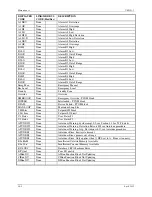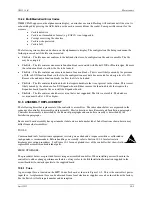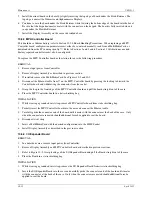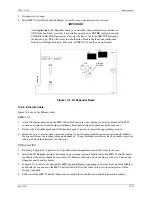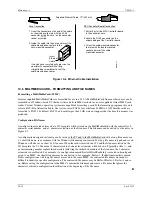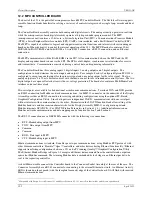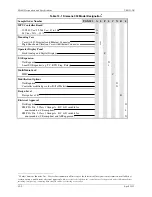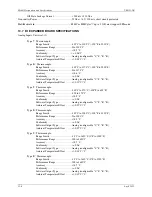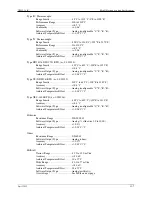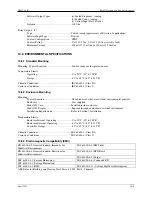
UM353-1B
Circuit Description
April 2012
12-3
A MultiMediaCard socket is located on the exposed edge (when the display assembly is freed) of the Controller
board. When the controller is configured from the faceplate, the configuration is stored to an EEPROM and to the
MultiMediaCard, using the station serial number as the file name. Each time the configuration is changed and
stored, the revised configuration is written to the EEPROM and to the MMC so a copy of the current configuration
is always available. The MMC can be removed from the controller, inserted in another 353 (design level B)
controller, and the configuration loaded into that controller. The card can also be used to transfer a configuration
between a controller and a PC running i|config, the Graphical Configuration Utility. Each MMC has sufficient space
for numerous configurations.
A configuration created at the 353 faceplate will be stored in the root directory of the MultiMediaCard with an 8-
character file name and a .V3C extension. Supported MMC file structures are FAT (file allocation table) 12 and
FAT 16. FAT 32 is not supported and MMC FAIL will be displayed on the controller faceplate should an MMC
formatted as FAT 32 be inserted in the controller. Refer to Section 10.5 MultiMediaCard – Formatting and File
Names for additional information.
A configuration created on a PC running i|config can be saved with a long file name (more than 8 characters). When
the file is saved at the PC, Windows will also create a short file name of 8 characters. This short 8 character file
name, generated from the long file name, will be displayed by the 353.
The on-board Power Supply circuit provides the power sources necessary for system power, internal analog output
power and transmitter power.
12.3 I/O EXPANDER BOARD
The I/O Expander Board communicates with the Controller Board and contains hardware that increases station
capability. Additional direct connected I/O includes two isolated universal analog inputs with thermocouple, RTD,
resistance, slidewire, mA and voltage conversions, two additional digital inputs that can be used as discrete or
frequency inputs, an additional analog output and two relay outputs. All calibration data for the Expander Board is
stored in the board’s nonvolatile EEPROM making recalibration unnecessary when interchanging Expander and
Controller Boards.
Expander circuitry operates under the control of the MPU-based Controller Board, and like the Controller Board, it
contains both analog and digital circuitry. The analog circuitry operates in real time while the digital circuitry
operates at high speed under program control.
Relay 1 and Relay 2 are triggered by the off-board MPU to provide relay contact type outputs. Each SPDT relay
output can be connected in a normally open or normally closed contact state.
Summary of Contents for 353
Page 12: ...Contents UM353 1B x April 2012 ...
Page 22: ...Introduction UM353 1B April 2012 1 10 ...
Page 30: ...Configuration Overview UM353 1B April 2012 2 8 ...
Page 122: ...Function Blocks UM353 1B April 2012 3 92 ...
Page 168: ...Data Mapping UM353 1B April 2012 6 28 ...
Page 204: ...Controller and System Test UM353 1B April 2012 9 8 ...
Page 222: ...Calibration UM353 1B April 2012 11 4 ...
Page 226: ...Circuit Description UM353 1B April 2012 12 4 ...
Page 238: ...Model Designation and Specifications UM353 1B April 2012 13 12 EC Declaration of Conformity ...
Page 240: ...Model Designation and Specifications UM353 1B April 2012 13 14 ...
Page 244: ...Abbreviations And Acronyms UM353 1B 14 4 April 2012 ...


